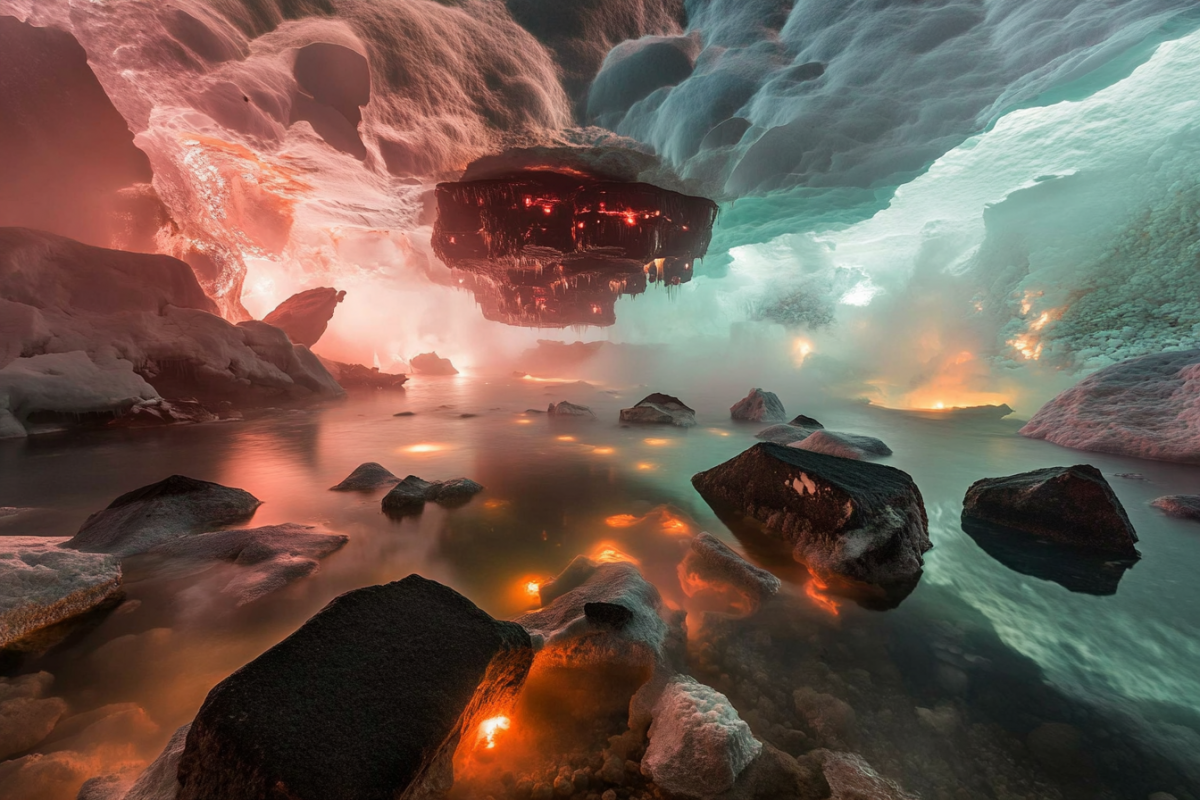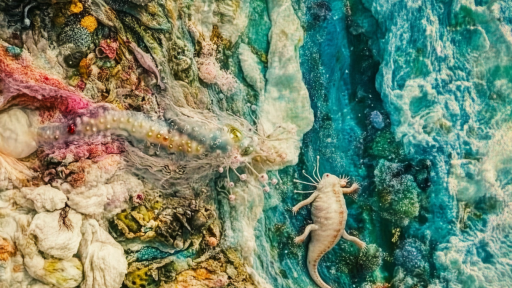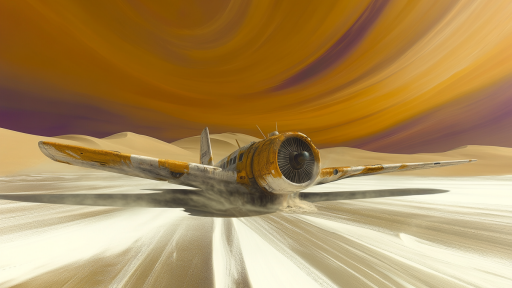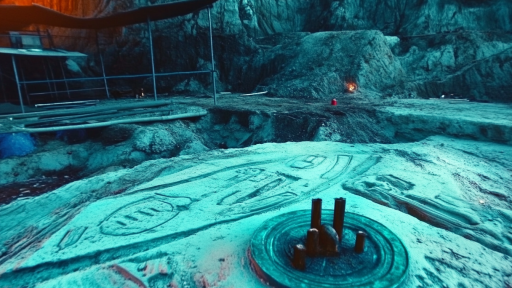
Life has a way of leaving its mark, even in the most unexpected places. From the depths of the ocean to the barren expanse of deserts and even outer space, scientists have uncovered traces of ancient organisms in locations that defy logic. These discoveries challenge what we thought we knew about life’s resilience and the environments it can survive in. Explore these bizarre places where history whispers through fossils, bacteria, and mysterious imprints, revealing a past far stranger than fiction.
Antarctica’s Fossilized Rainforest

Beneath the thick ice of Antarctica, scientists uncovered fossilized remnants of a lush, prehistoric rainforest. Dating back to the time of the dinosaurs, these ancient trees and plant life suggest that the continent once teemed with greenery and warmth. How did such a dramatic transformation take place? The discovery forces us to rethink the drastic shifts Earth has undergone over millions of years.
The Deep-Sea Hydrothermal Vents

At the bottom of the ocean, where sunlight cannot reach, scientists found entire ecosystems thriving around hydrothermal vents. These scorching, mineral-rich geysers support bizarre creatures, some of which resemble life from Earth’s earliest days. Could this be a glimpse into how life first emerged on the planet? The eerie beauty of these deep-sea chimneys challenges our understanding of where life can exist.
The Atacama Desert’s Microbial Life

One of the driest places on Earth, the Atacama Desert in Chile, seems lifeless at first glance. Yet, beneath the surface, scientists discovered ancient microbial colonies that have survived in extreme dryness for thousands of years. Their existence raises tantalizing questions about the potential for life on Mars, as the Atacama’s conditions closely mimic the Red Planet. Could similar microbes be lurking beneath Martian soil?
The Caves of Naica’s Giant Crystals

Deep in a Mexican cave system, immense crystals—some over 30 feet long—hold a secret: ancient microbes trapped inside for tens of thousands of years. These resilient life forms were dormant but still viable when discovered, hinting at life’s ability to survive extreme conditions. Could similar life forms be hiding in other unexplored underground worlds? The discovery has implications that stretch far beyond Earth.
Greenland’s Oldest Fossils on Earth

On the icy shores of Greenland, scientists discovered what may be the oldest known fossils—stromatolites formed by microbial mats billions of years ago. These structures offer a glimpse into the earliest days of life on Earth, long before complex organisms evolved. Their extreme age raises a fascinating possibility: could similar ancient life once have existed elsewhere in the solar system?
The Bacteria Trapped in Siberian Permafrost

Deep in the frozen ground of Siberia, scientists found bacteria that had been trapped in ice for tens of thousands of years—and were still alive. These microscopic survivors have remained in suspended animation, waiting for the right conditions to awaken. If life can endure such extreme dormancy, could something similar be hiding in the icy depths of other planets?
The Meteorite That Contained Fossil-Like Structures

A mysterious meteorite from Mars, found in Antarctica, contained microscopic structures that some scientists believe resemble ancient fossils. Though controversial, this discovery reignited the debate over whether life once existed on the Red Planet. If confirmed, it would be one of the most groundbreaking discoveries in history—evidence that life is not unique to Earth.
The Caves of South Africa’s “Deepest Life”

In the depths of South African caves, scientists discovered a species of bacteria living miles underground, completely isolated from the surface. These microbes survive without sunlight, relying on chemical reactions to sustain themselves. Their existence suggests that life could exist in similarly harsh, underground environments on other planets.
Lake Vostok’s Hidden Ecosystem

Beneath nearly two miles of Antarctic ice, Lake Vostok remained untouched for millions of years. When scientists finally drilled into it, they found traces of ancient, unknown life forms. The extreme isolation of this lake makes it a fascinating parallel to icy moons like Europa, where similar hidden ecosystems might exist beneath frozen surfaces.
The Driest Valley in Antarctica

Antarctica’s McMurdo Dry Valleys are so barren they resemble Mars, yet scientists discovered ancient bacteria clinging to life within salty, briny deposits. These microbes have adapted to one of the harshest environments on Earth, surviving in almost complete desolation. If life can exist here, it strengthens the possibility that life could persist on other planets in similar extreme conditions.
The Himalayas’ Fossilized Ocean Creatures

High in the Himalayas, fossils of ancient marine creatures have been found embedded in the rock, revealing that this towering mountain range was once at the bottom of an ocean. These discoveries prove how drastically Earth’s surface has changed over time, shifting continents and raising seabeds sky-high. What other lost ecosystems might be hidden beneath the world’s mountains?
The Lost Microbial World of Yellowstone

In the scalding hot springs of Yellowstone National Park, scientists discovered a bizarre microbial ecosystem thriving in extreme temperatures. These heat-loving organisms, known as thermophiles, may resemble some of the earliest forms of life on Earth. Their ability to withstand boiling conditions suggests that similar life could exist in extreme environments beyond our planet.
The Deep Biosphere Beneath the Ocean Floor

Miles beneath the ocean floor, scientists discovered an entire ecosystem of microbes living in the cracks of Earth’s crust. These life forms, surviving in near-total darkness, feed off the minerals around them, completely independent of sunlight. Could similar deep biospheres exist beneath the surfaces of distant planets or moons?
The Amazon Rainforest’s “Boiling River” and Its Ancient Life

Deep in the heart of the Amazon, a mysterious boiling river has baffled scientists with its scalding waters that can reach nearly 200°F. Despite the extreme heat, microbial life thrives within, adapting to the intense environment in ways never seen before. These heat-resistant organisms provide clues about how ancient life may have survived in extreme conditions on early Earth. Could similar life exist in volcanic lakes or hydrothermal systems on other planets?
The Sulfuric Pools of Ethiopia’s Danakil Depression

In one of the most extreme environments on Earth, Ethiopia’s Danakil Depression, scientists found microbial life thriving in pools of boiling, sulfuric acid. The landscape is an alien world of neon-colored mineral deposits, bubbling lava, and toxic fumes. Despite the deadly conditions, certain microbes have adapted to survive here, raising questions about whether similar life could exist on Venus or other hostile planets. If life can endure such brutality, where else might it be hiding?
Whispers from the Past

Life has a way of persisting in places we once thought impossible, reshaping our understanding of where it can exist. From the deepest caves to frozen tundras and even beyond our planet, these discoveries challenge the limits of survival. If ancient life can be found in such bizarre locations on Earth, what might still be waiting to be uncovered elsewhere? Perhaps the greatest discovery is yet to come.





